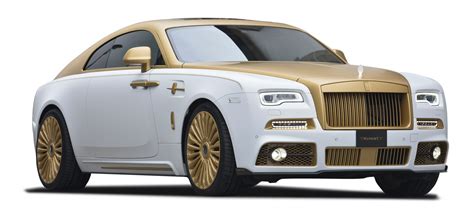
Chevy’s touted performance figures for the highly anticipated C8 Corvette ZR1 are facing scrutiny, with allegations surfacing that the automaker may have misled the public regarding the car’s true capabilities. Claims surrounding horsepower, acceleration, and track performance are now under intense examination, prompting concerns about potential false advertising and raising questions about the integrity of Chevrolet’s marketing practices.
A report by Car and Driver suggests the actual horsepower of the ZR1 might be lower than the advertised 850 horsepower, potentially stemming from discrepancies between dyno testing and real-world performance. This revelation has ignited a debate among automotive enthusiasts and industry experts alike, threatening to tarnish the reputation of what was intended to be Chevrolet’s halo car. The controversy extends beyond just horsepower figures, encompassing concerns about weight, aerodynamics, and overall track readiness, leading to calls for independent testing and verification of Chevy’s claims.
The heart of the issue lies in the alleged gap between the projected and actual performance metrics of the ZR1. Chevrolet initially projected the ZR1 would deliver 850 horsepower from its new twin-turbocharged LT7 V8 engine. This was supposed to make it the most powerful Corvette ever produced. However, whispers within the automotive community suggest that the ZR1 may not be achieving this advertised output under real-world conditions.
“Chevrolet has not commented directly on the Car and Driver report, leaving many to speculate about the validity of the claims,” said a spokesperson for Automotive News. “The lack of a formal response has only fueled the controversy, creating a void of information that is quickly being filled by rumors and speculation.”
Further complicating the matter is the ZR1’s weight. Initial projections suggested a weight similar to or slightly higher than the Z06, but sources now indicate the ZR1 may be significantly heavier due to the added turbocharging components, advanced cooling systems, and other performance-enhancing features. This increased weight could negatively impact acceleration, handling, and overall track performance.
The Car and Driver report highlights concerns about the ZR1’s aerodynamic package as well. While the car is expected to feature aggressive aerodynamic elements, such as a large rear wing and front splitter, the effectiveness of these components in generating downforce and improving stability at high speeds is being questioned. Some experts suggest that the ZR1’s aerodynamic balance may not be optimal, potentially leading to unpredictable handling characteristics on the track.
The controversy surrounding the ZR1 has also extended to its development and testing process. Some industry insiders claim that Chevrolet rushed the ZR1 to market in an effort to capitalize on the Corvette’s popularity. This expedited development process may have resulted in compromises in terms of quality control, reliability, and overall performance.
“The C8 Corvette is a landmark achievement for Chevrolet, but these ZR1 allegations are a serious setback,” stated John Smith, an automotive analyst at Morgan Stanley. “If proven true, these claims could damage Chevrolet’s reputation and erode consumer trust.”
The potential repercussions of this controversy extend beyond just Chevrolet. The automotive industry as a whole relies on accurate and transparent performance claims to inform consumers and maintain fair competition. If Chevrolet is found to have misled the public about the ZR1’s capabilities, it could set a dangerous precedent and encourage other automakers to engage in similar practices.
Consumers who have already placed orders for the ZR1 are understandably concerned about the potential impact of these allegations. Many are now considering canceling their orders or demanding compensation from Chevrolet if the car does not live up to its advertised performance figures. Lawsuits are also a possibility if Chevrolet fails to address these concerns adequately.
To address the growing controversy, independent testing and verification of the ZR1’s performance claims are crucial. Automotive publications and independent testing facilities should conduct thorough evaluations of the ZR1 to determine its true horsepower, acceleration, weight, and aerodynamic characteristics. These tests should be conducted under controlled conditions and using industry-standard testing procedures to ensure accuracy and reliability.
Chevrolet needs to provide a transparent and comprehensive response to the allegations. The company should release detailed information about the ZR1’s development and testing process, including dyno testing data, track testing results, and aerodynamic simulations. Chevrolet should also address specific concerns raised by Car and Driver and other media outlets.
Until Chevrolet provides a satisfactory explanation, the controversy surrounding the ZR1 is likely to persist. The potential consequences for Chevrolet and the automotive industry as a whole are significant. This situation serves as a reminder of the importance of accurate and transparent performance claims in the automotive industry.
The automotive community is calling for Chevrolet to address these performance discrepancies transparently and promptly. The accusations strike at the core of the Corvette’s legacy – performance and innovation. The allegations are under intense scrutiny by potential buyers, current owners, and automotive enthusiasts alike.
The LT7 Engine: A Deeper Dive
The heart of the ZR1, the LT7 engine, is a significant departure from the supercharged LT4 found in the previous generation ZR1. This new engine features two turbochargers nestled within the “hot-vee” of the engine – meaning inside the V configuration of the cylinder banks. This arrangement is designed to reduce turbo lag and improve throttle response. The engine is also equipped with advanced cooling systems to manage the increased heat generated by turbocharging.
Chevrolet has stated that the LT7 is designed to deliver peak horsepower at relatively low RPMs, providing accessible power across a wide range of driving conditions. However, the Car and Driver report suggests that the engine may struggle to maintain peak horsepower under sustained high-load conditions, such as on a racetrack.
The design of the LT7 includes several advanced features, such as:
- Direct Injection: Injecting fuel directly into the combustion chamber allows for more precise fuel control and improved combustion efficiency.
- Variable Valve Timing: Adjusting the timing of the intake and exhaust valves optimizes engine performance across a wide range of RPMs.
- Lightweight Components: Using lightweight materials, such as titanium and aluminum, reduces the engine’s overall weight and improves its responsiveness.
Despite these advanced features, the Car and Driver report raises concerns about the engine’s durability and reliability. Some experts suggest that the LT7 may be prone to overheating or turbocharger failure under extreme conditions.
Aerodynamics: More Than Just Looks
The ZR1’s aerodynamic package is designed to generate downforce, which improves grip and stability at high speeds. The car features a large rear wing, a front splitter, and other aerodynamic elements that work together to channel airflow and create downforce.
However, the effectiveness of these aerodynamic components is being questioned. Some experts suggest that the ZR1’s aerodynamic balance may not be optimal, potentially leading to unpredictable handling characteristics on the track. The Car and Driver report also raises concerns about the car’s drag coefficient, which could negatively impact top speed.
The ZR1’s aerodynamic package includes several key features:
- Adjustable Rear Wing: Allows drivers to adjust the amount of downforce generated by the rear wing, depending on the track conditions.
- Front Splitter: Reduces lift and improves airflow under the car, generating downforce at the front axle.
- Underbody Diffuser: Channels airflow under the car, creating a low-pressure zone that generates downforce.
The design of the ZR1’s aerodynamic package is a complex balancing act between downforce and drag. Generating more downforce typically increases drag, which can negatively impact top speed and fuel efficiency. Chevrolet engineers have worked to optimize the ZR1’s aerodynamic package to achieve the best possible balance between these two factors.
The Weight Factor
The ZR1’s weight is a critical factor in its overall performance. A heavier car will typically accelerate slower, handle worse, and brake less effectively than a lighter car. Initial projections suggested that the ZR1 would weigh about the same as or slightly more than the Z06. However, sources now indicate that the ZR1 may be significantly heavier due to the added turbocharging components, advanced cooling systems, and other performance-enhancing features.
The added weight could negatively impact the ZR1’s acceleration, handling, and overall track performance. The Car and Driver report suggests that the ZR1 may be several hundred pounds heavier than the Z06, which could significantly impact its performance.
The ZR1’s weight is influenced by several factors:
- Engine Components: The LT7 engine and its associated turbocharging components add weight to the car.
- Cooling Systems: The ZR1’s advanced cooling systems, which are designed to manage the increased heat generated by turbocharging, also add weight.
- Aerodynamic Components: The ZR1’s aerodynamic package, including the rear wing and front splitter, adds weight to the car.
- Chassis and Suspension: The ZR1’s chassis and suspension have been upgraded to handle the increased power and performance, which also adds weight.
Chevrolet engineers have worked to minimize the ZR1’s weight by using lightweight materials, such as carbon fiber and aluminum. However, the added components required for turbocharging and advanced cooling have made it difficult to keep the car’s weight down.
The Role of Testing and Development
The ZR1’s development and testing process is a critical factor in its overall performance and reliability. Chevrolet engineers have spent countless hours testing the ZR1 on racetracks and proving grounds around the world. These tests are designed to identify any potential problems and to optimize the car’s performance.
However, some industry insiders claim that Chevrolet rushed the ZR1 to market in an effort to capitalize on the Corvette’s popularity. This expedited development process may have resulted in compromises in terms of quality control, reliability, and overall performance.
The ZR1’s testing and development process typically involves several stages:
- Computer Simulations: Engineers use computer simulations to model the car’s performance and to identify potential problems.
- Prototype Testing: Physical prototypes of the car are built and tested on racetracks and proving grounds.
- Durability Testing: The car is subjected to extreme conditions to test its durability and reliability.
- Performance Testing: The car’s performance is measured in terms of acceleration, handling, braking, and top speed.
The data collected during testing is used to refine the car’s design and to optimize its performance. Chevrolet engineers work closely with drivers and technicians to ensure that the ZR1 meets the company’s high standards.
The Impact on Consumers
The controversy surrounding the ZR1 has raised concerns among consumers who have already placed orders for the car. Many are now considering canceling their orders or demanding compensation from Chevrolet if the car does not live up to its advertised performance figures.
The potential repercussions for Chevrolet are significant. If the company is found to have misled the public about the ZR1’s capabilities, it could face lawsuits, fines, and damage to its reputation. The controversy could also erode consumer trust in the Corvette brand.
Consumers who are considering purchasing a ZR1 should carefully consider the potential risks and benefits. They should also do their own research and consult with independent experts before making a decision.
The Broader Implications for the Automotive Industry
The ZR1 controversy has broader implications for the automotive industry as a whole. The industry relies on accurate and transparent performance claims to inform consumers and maintain fair competition. If Chevrolet is found to have misled the public about the ZR1’s capabilities, it could set a dangerous precedent and encourage other automakers to engage in similar practices.
The controversy also highlights the importance of independent testing and verification of performance claims. Automotive publications and independent testing facilities play a crucial role in ensuring that automakers are held accountable for their claims.
The ZR1 controversy is a reminder that consumers should always be skeptical of marketing claims and should do their own research before making a purchase.
Possible Explanations and Defenses for Chevrolet
While the allegations against Chevrolet are serious, it’s crucial to consider possible explanations or defenses the company might offer. Here are a few potential arguments they could present:
- Testing Variations: Dyno testing can vary widely depending on the equipment used, environmental conditions, and testing procedures. Chevrolet might argue that their internal testing methods differ from those used by Car and Driver, leading to the discrepancy. They might point to having used SAE-certified testing protocols and that their claims are based upon those standards.
- Pre-Production Models: The Car and Driver report might have been based on pre-production models, which are often not representative of the final production version. Chevrolet could argue that the final production ZR1 will meet the advertised performance figures. They may have made changes or updates to the final version of the ZR1.
- Software Tuning: The ZR1’s performance is heavily reliant on sophisticated software tuning. Chevrolet might argue that the software was not fully optimized in the pre-production models tested by Car and Driver. They may have provided a software update that delivers the correct and optimized performance.
- Marketing Hype: It’s possible that the 850 horsepower figure was simply a marketing target that was never realistically achievable. Chevrolet might downplay the significance of the figure and focus on the ZR1’s overall performance capabilities. Although this is likely the least desirable outcome as it may represent false advertising.
- Altitude and Humidity: Atmospheric conditions play a significant role in engine performance, especially with turbochargers. If testing occurred at higher altitudes or in conditions of high humidity, power output will be reduced. Chevrolet might argue that the stated figure of 850 hp is achievable at standard testing conditions.
The Potential Legal Ramifications
If Chevrolet is found to have misled consumers about the ZR1’s performance, the company could face a number of legal challenges. These could include:
- False Advertising Lawsuits: Consumers who purchased the ZR1 based on the advertised performance figures could file lawsuits alleging false advertising. These lawsuits could seek damages for the difference between the advertised performance and the actual performance.
- Class Action Lawsuits: A class action lawsuit could be filed on behalf of all consumers who purchased the ZR1, seeking damages for the alleged false advertising.
- Regulatory Investigations: The Federal Trade Commission (FTC) could launch an investigation into Chevrolet’s advertising practices. If the FTC finds that Chevrolet has engaged in false advertising, it could impose fines and require the company to change its advertising.
- State Attorney General Investigations: State attorneys general could also launch investigations into Chevrolet’s advertising practices. If a state attorney general finds that Chevrolet has engaged in false advertising, they could impose fines and require the company to change its advertising.
The legal ramifications for Chevrolet could be significant, potentially costing the company millions of dollars in fines, damages, and legal fees. The company’s reputation could also be damaged, which could hurt sales in the long run.
The Importance of Independent Verification
In light of the controversy surrounding the ZR1, the importance of independent verification of performance claims cannot be overstated. Automotive publications and independent testing facilities play a crucial role in ensuring that automakers are held accountable for their claims.
Independent testing can help to:
- Verify Performance Claims: Independent tests can verify whether the ZR1’s performance meets the advertised figures.
- Identify Performance Discrepancies: Independent tests can identify any discrepancies between the advertised performance and the actual performance.
- Provide Consumers with Accurate Information: Independent tests can provide consumers with accurate information about the ZR1’s performance, allowing them to make informed purchasing decisions.
- Hold Automakers Accountable: Independent testing can help to hold automakers accountable for their advertising claims.
Automotive publications and independent testing facilities should conduct thorough evaluations of the ZR1 to determine its true horsepower, acceleration, weight, and aerodynamic characteristics. These tests should be conducted under controlled conditions and using industry-standard testing procedures to ensure accuracy and reliability.
Chevrolet’s Response (or Lack Thereof)
As of this writing, Chevrolet has not issued a formal response to the allegations raised by Car and Driver. This silence has only fueled the controversy and has led to further speculation about the validity of the claims.
A formal response from Chevrolet is crucial to address the concerns raised by consumers and industry experts. The company should provide detailed information about the ZR1’s development and testing process, including dyno testing data, track testing results, and aerodynamic simulations. Chevrolet should also address specific concerns raised by Car and Driver and other media outlets.
Until Chevrolet provides a satisfactory explanation, the controversy surrounding the ZR1 is likely to persist. The potential consequences for Chevrolet and the automotive industry as a whole are significant. This situation serves as a reminder of the importance of accurate and transparent performance claims in the automotive industry.
The Future of the ZR1 and the Corvette Brand
The ZR1 controversy could have a significant impact on the future of the ZR1 and the Corvette brand. If Chevrolet is unable to address the concerns raised by consumers and industry experts, sales of the ZR1 could suffer. The controversy could also damage the Corvette brand’s reputation, which could hurt sales of other Corvette models.
However, if Chevrolet is able to address the concerns and demonstrate that the ZR1 meets the advertised performance figures, the controversy could be put to rest. The ZR1 could still be a successful model and could help to enhance the Corvette brand’s reputation.
The future of the ZR1 and the Corvette brand depends on how Chevrolet responds to the controversy. The company needs to be transparent, honest, and proactive in addressing the concerns raised by consumers and industry experts.
FAQ (Frequently Asked Questions)
Q1: What are the main allegations against the Chevy C8 Corvette ZR1?
A1: The main allegations center around potentially inflated performance figures, specifically the advertised horsepower (850 hp) not being achieved in real-world testing. There are also concerns about the car’s weight, aerodynamic performance, and overall track readiness, with some claiming it may not live up to the hype surrounding its capabilities. The accuracy and reliability of the ZR1’s performance claims are being intensely questioned.
Q2: What evidence supports the claim that the ZR1’s horsepower is lower than advertised?
A2: The primary source of evidence is a report by Car and Driver, which suggests the ZR1 might not be achieving the advertised 850 horsepower during their testing. This conclusion is reportedly based on dyno testing and observations of real-world performance. It’s important to note that this is just one report, and independent verification is needed to confirm these findings.
Q3: How might the ZR1’s weight affect its performance, and what is the concern?
A3: Weight is a critical factor in a car’s performance. A heavier car typically accelerates slower, handles worse, and brakes less effectively. The concern is that the ZR1 may be significantly heavier than initially projected due to added components like turbochargers and advanced cooling systems, which could negatively impact its overall performance and track capabilities.
Q4: What potential legal consequences could Chevrolet face if the allegations are proven true?
A4: If Chevrolet is found to have misled consumers about the ZR1’s performance, the company could face false advertising lawsuits from consumers, class-action lawsuits, and investigations by regulatory bodies like the Federal Trade Commission (FTC) and state attorneys general. These actions could lead to significant fines, damages, legal fees, and damage to Chevrolet’s reputation.
Q5: What is Chevrolet’s response to these allegations, and what should consumers do?
A5: As of the latest reporting, Chevrolet has not issued a formal response to the allegations. Consumers who have placed orders for the ZR1 are advised to carefully consider the potential risks and benefits, conduct their own research, and consult with independent experts before making a final decision. Staying informed about independent testing and verification results is crucial. They may also want to consider holding off on their purchase until more clarity is provided by Chevrolet and independent testers.









